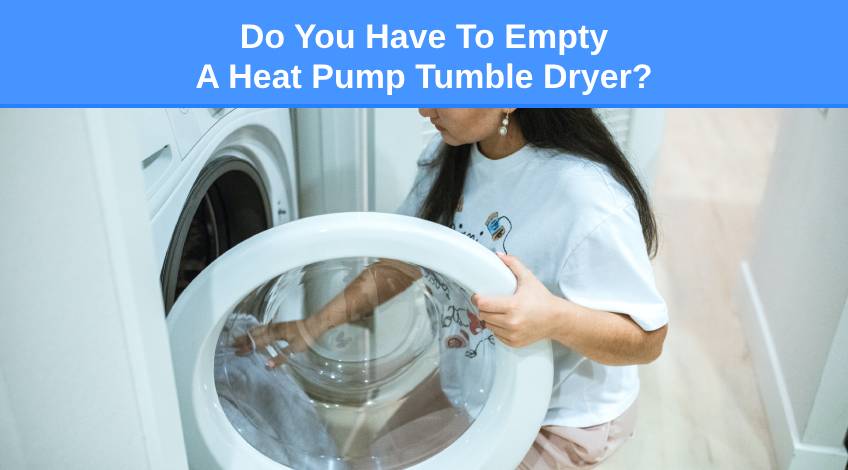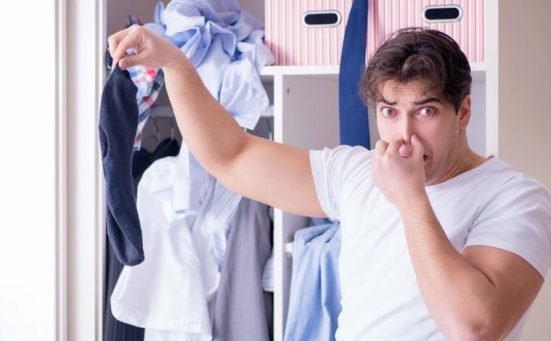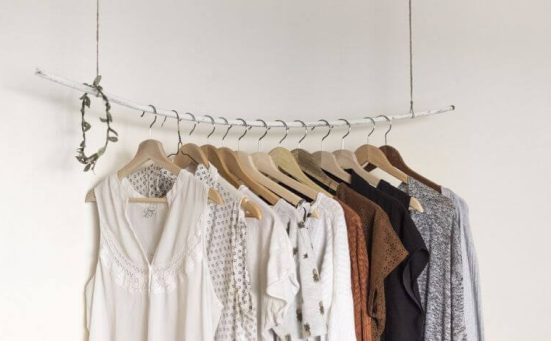
Do You Have To Empty A Heat Pump Tumble Dryer?
If you’re considering getting a heat pump tumble dryer to replace your existing dryer you will almost certainly have some questions. One of the many questions we get asked is do you have to empty a heat pump dryer?
The answer is yes, you do need to empty a heat pump dryer to remove all of the water that’s condensed from the hot air passing through the laundry in the drum.
Keep reading for more information.
How Do You Empty A Heat Pump Dryer?
The water tank is typically located at the top front of the appliance and simply pulls out. The water in the tank can be poured directly down the sink as it is only water and will not harm any aquatic life or ecosystems.
You might think this is a bit of a tall order but it’s really easy to do and once you’ve done it once or twice you won’t even think about it.
How Often Does The Water Tank Need Emptying?
Many heat pump tumble dryer manufacturers recommend emptying the water tank after every use. But in many cases you can leave it to every second or third use before emptying it.
However, it’s best to follow the manufacturer’s instructions because the more water collected in the tank, the heavier the tank will be and the harder it will be to empty it.

Can You Use A Heat Pump Dryer Without Emptying The Water Tank?
As we just said, ideally the water tank should be emptied after every use but in some cases you can leave it until after the 3rd use. However, if you don’t want to have the bother of emptying the water tank, you can get a drain hose fitted.
This will mean you might be limited as to where the dryer can be placed in your home because it will need to be placed near to a drainage pipe.
Some manufacturers even supply their dryers with an optional drain hose that can be fitted if you have access to a suitable drainage pipe. You can often install the drain hose yourself but if you’re not confident in your DIY skills we recommend contacting a technician to do it for you.
If you decide to do it yourself, check your user manual for specific instructions. It typically involves altering the drain hose on the back of the appliance and then running a drain hose from the dryer to the waste pipe under the sink or basin.
In some cases the drain hose can be simply placed in the sink when the dryer is in use. But this is not really a long term solution as it can become messy and the hose can inhibit the regular use of the sink.
How Do Heat Pump Dryers Work?
Just like condenser dryers, heat pump dryers have no need for venting. All of the moisture is extracted from the air that passes through the clothes on the condenser.
The water is collected into the water tank which, as we have just learned, needs emptying regularly.
Unlike condenser dryers however, is the way the air that’s left after being passed through the condenser is dealt with. In condenser dryers, that warm, dry air is expelled from the dryer and into the laundry room.
Heat pump dryers on the other hand reuse that still warm but dry air and pump it back through the drum to dry the laundry. This means heat pump dryers use less energy to dry laundry.
Plus, they only heat the air to around 50 degrees C whereas condenser dryers use 70 to 75 degree C heat. Which means heat pump dryers use less energy anyway.

What Are The Advantages Of Heat Pump Dryers?
The main advantages include;
- Energy Efficiency
As heat pump dryers reuse the hot air from the drum and as they don’t heat that air above 50 C, they use far less energy than the other types of dryers. - Lower Running Costs
The less power used to heat the air, results in lower running costs. - Gentler On Clothes
The lower temperatures used to dry laundry means less wear and tear on your clothes. - No Need For Vents
Unlike vented dryers, heat pump models don’t rely on a vent to remove the damp air. - Can Be Placed Almost Anywhere
As they do not need venting, heat pump dryers can be placed almost anywhere.
Are There Any Disadvantages To Heat Pump Dryers?
The downside to heat pump dryers is that, as they use lower temperatures, the laundry will take longer to dry compared to condenser dryers. However, in some cases the difference is only around 15 to 20 minutes.
Then there’s the fact that the water tank will need to be emptied regularly. However, the same is true of condenser dryers as well.
The other main disadvantage of heat pump dryers is the purchase price which is typically around £200 higher than condenser dryers. However, as more and more manufacturers develop their own versions of heat pump dryers these prices will level out over time.
Is It Worth Buying A Heat Pump Tumble Dryer?
If your old dryer is on the way out and needs replacing, you’re probably looking at all of the options available to you. Realistically, the only one that can answer the question above is you.
Remember heat pump dryers cost around £200 more on average than condenser dryers. They will also take longer to dry your clothes and unless you get a fixed drainage hose connected to the waste pipe, you’ll need to empty the water tank regularly as well.
Having said all of that, the lower temperatures used to dry the laundry is gentler on your clothes and will reduce energy costs which will counteract the higher purchase price over time.
Heat pump dryers are also more environmentally friendly as they use less energy and this could be a deciding factor for you.
We hope you find this article useful and if you do have any questions feel free to ask them in the comments section below.
SEE ALSO: What Is A Heat Pump Dryer? (and how do they work)
Frequently Asked Questions
It is recommended that you empty the water tank on a heat pump dryer after every use.
You do not need a drain for a heat pump tumble dryer as they come supplied with an on-board water tank. However if you want to fit a permanent drain hose to the dryer it can be done. This would eliminate the need for the water tank and would mean you wouldn’t need to empty the water tank.
Most heat pump dryers come supplied with an optional drain hose that can be installed permanently into the wastewater system of your home. The same is true for many condenser dryers too. However, this is optional, all heat pump dryers come fitted with on-board water tanks which store the water removed from the clothes via the condenser. This water tank will need to be emptied ideally after every use.




